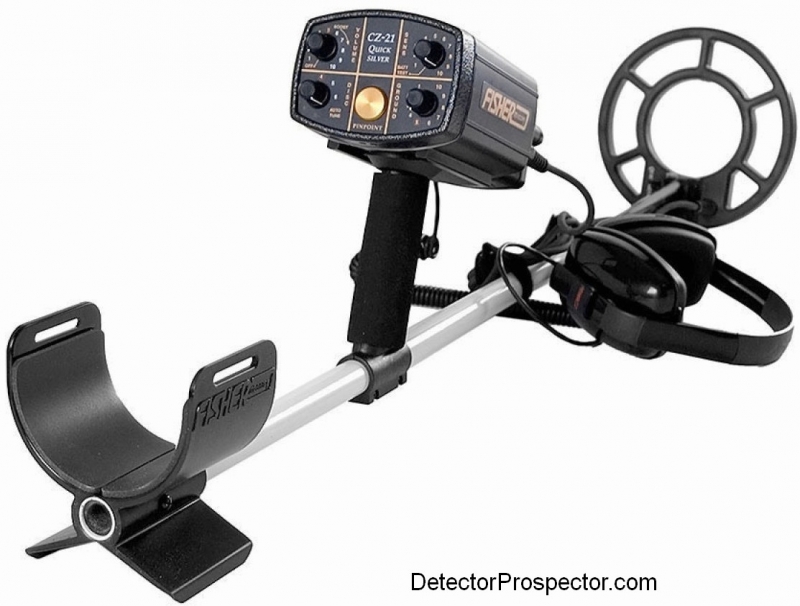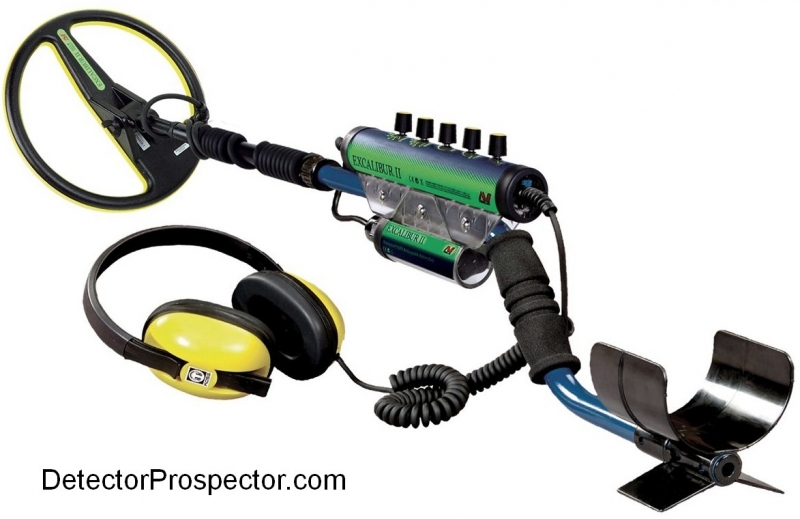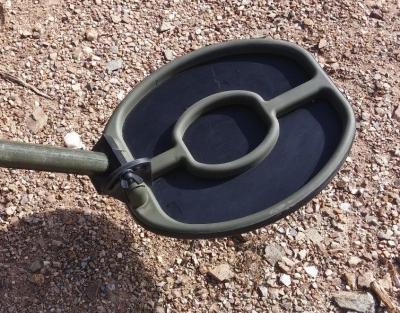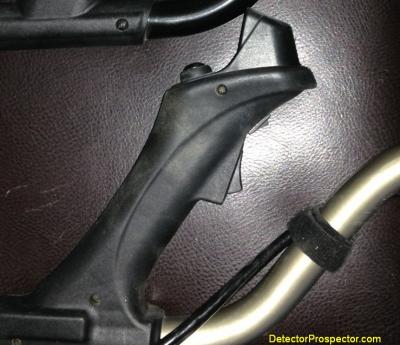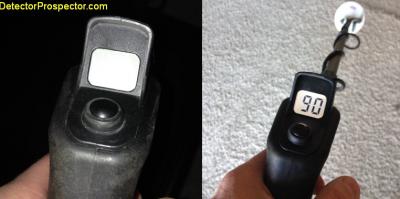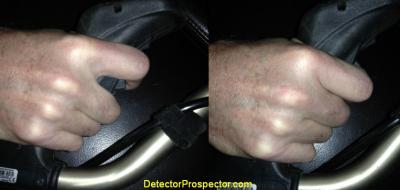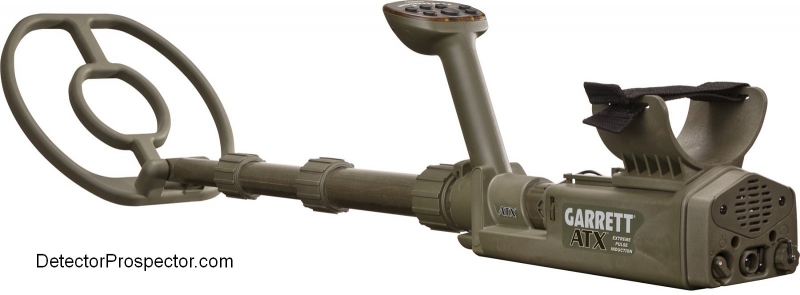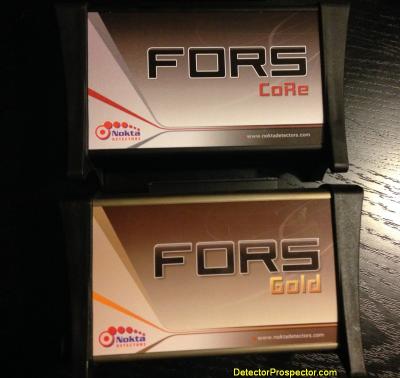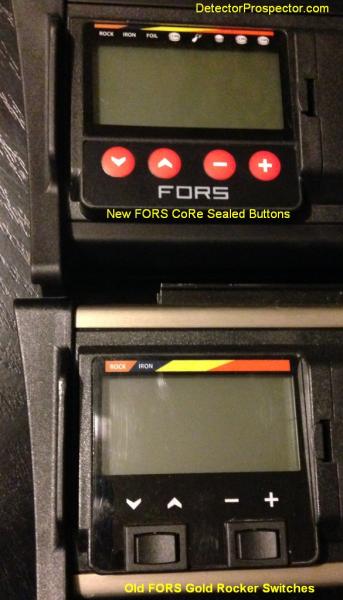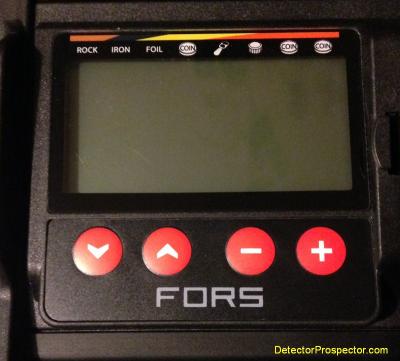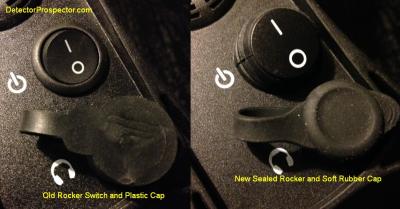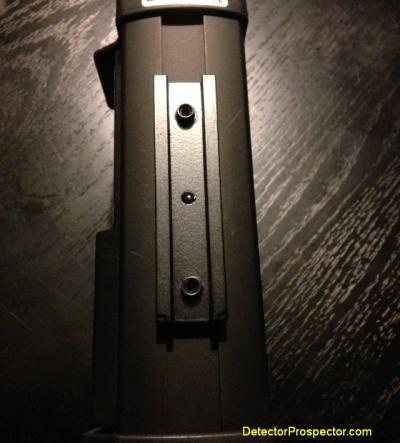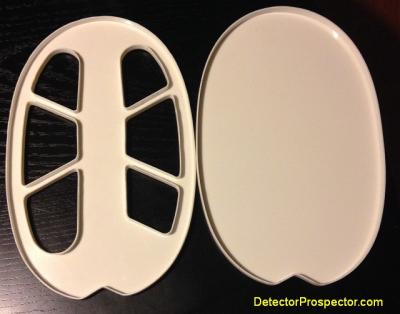-
Posts
19,794 -
Joined
Content Type
Forums
Detector Prospector Home
Detector Database
Downloads
Everything posted by Steve Herschbach
-
This is going to sound really funny coming from somebody who discusses and obsesses so much over metal detectors. In my case at least the metal detectors themselves do not really have a whole lot to do with it. Or at the most only in a very broad sense. What I need by way of a detector is one broadly applicable to the task at hand. In other words, if I am salt water beach detecting, I need a detector that works well on salt water beaches. So I would be looking at a Fisher CZ-21, Garrett Sea Hunter, Garrett Infinium, Garrett ATX, Minelab Excalibur, Minelab CTX 3030, Tesoro Sand Shark, White's Beachunter ID, or White's Surf PI. In other words, a waterproof multi frequency or pulse induction detector. Which one of all the above I grab will not matter all that much. What matters is: A. Location, location, location. Have to be in a good spot to find whatever it is I am looking for. Lacking that all else is a waste of time. B. Know whatever detector I do choose to use and have the ability to use it properly. C. Hard work and patience. Though the work need not be hard or even work, since I enjoy doing what I do. The detectors vary somewhat in performance but not so much that I cannot offset whatever they lack by working harder than the other person. A just barely ok detector worked well and patiently on good ground will always trump the best detector sitting in a closet. I honestly am not some kind of tuning expert. I never did really learn what everything on my GPX 5000 did. I just get a detector running well enough and then get to someplace decent and put in the hours. Finally, as a friend says - it is better to be lucky than be good!
-

Allan Trees Gold Rocker Box
Steve Herschbach replied to tvanwho's topic in Gold Panning, Sluicing, Dredging, Drywashing, Etc
Hi Tom, Yes, I got a Gold Grabbin Rocker from what used to be the Gold Dredge Builders Warehouse but which now looks to be named Gold Grabber Manufacturing LLC. In either case it is Alan Trees. Here is the page on the Gold Grabbin Rocker There also is a new Mini Rocker Alan Trees Gold Grabbin Rocker Here is a previous thread on the rocker at http://www.detectorprospector.com/forum/topic/93-gold-grabbin-rocker/ that includes a video. I bought it brand new, hauled it around Alaska all summer two years ago and never used it, and sold it unused before I left Alaska. Lesson being Steve would rather metal detector than shovel dirt! I think it looked to be a great product and if I wanted a rocker I would buy one all over again. -
Excalibur and CZ are the two best most well regarded multi frequency salt water detectors you can buy. You can read for hours pages comparing both and the result will be they both are good. Again, a style difference. The Excalibur has a fluty multi tone response. CZ a more distinct three tone system. Excalibur an odd and unique physical design not noted for being particularly robust. More maintenance than the more bullet proof CZ. The CZ has a more traditional control box easily hip or chest mounted. The CZ also just had a huge price increase. My best advice is download and read owners manual for both to help decide. Fisher CZ-21 Owners Manual Minelab Excalibur II Owners Manual Fisher CZ-21 CZ-21 Specifications Length Extended: 50” Length Collapsed: 30” Control Housing Weight: 2.8 lbs Weight Complete (with headset): 8” Coil 5 lb 11 oz 10.5” Coil 6 lb 1 oz 5” Coil 5.4 lb Handle and Search Coil: 8” Coil 2 lb 6.9 oz 10.5” Coil 2 lb 12.9 oz 5” Coil 2.1 lb Frequency 1. Dual, VLF Search 5 KHz and 15 KHz 2. Audio Target Response Iron I.D.: 200 Hz (Low tone) Foil and Tab I.D.: 450 Hz (Mid tone) Coin I.D.: 1 KHz (High tone) Autotune: 500 Hz - 1 KHz (VCO) Pinpoint: 500 Hz - 1 KHz (VCO) Operating Modes 1. Autotune - VLF-Motion, all-metal with threshold tone 2. Target I.D.: VLF-Slow Motion, Silent Search Discrimination 3. Pinpoint: VLF, All-Metal, No Motion Search Coil Type: Concentric, Co-Planar Diameter: 8”, 10.5” or 5” Shielding: 100% ESI Interchangeable: No Headset: Waterproof, Piezo Electric Interchangeable: No Ground Balance: Touch Pad, Manual or “Preset” Control Markings Hipmountable Control Housing: Yes Salt Water/Fresh Water Operation: Yes Land Operation: Yes Submersible: to 250 feet Minelab Excalibur II Product Excalibur II Application Coin, Relic, Jewellery, Beach & Dive (waterproof 200ft) Technology BBS Frequency/Transmission Multiple frequencies: 1.5, 3, 4.5,...25.5kHz) Coil (standard) Choice of 8" or 10" round Double-D hardwired coil. Audio Output Headphones (hardwired). Headphones Supplied Koss 8 ohm headphones (hardwired). Visual Display - Backlight - USB Connectivity - Memory - Depth Indication - Detect Modes Discriminate or All-Metal (Pinpoint). Discrimination Variable Discrimination (adjustable turn control) & All Metal (Pinpoint). Timings - Audio tone - Audio Type - Ground Balance Automatic ground rejection. Ground Balance Type - Trash Density - Pinpoint Pinpoint mode. Sensitivity Adjust Auto & manual (adjustable turn control). Tune / Noise Cancel - Threshold Adjustable turn contol. Target Volume Adjust Adjustable turn control. Battery NiMH battery pack 13V 1000 mAh (14-19 hours). Supplied with mains charger, alkaline battery optional accessory. Low battery alert Audio alert. Length Standard shaft 1140mm - 1220mm (45" - 48"); Dive shaft 820mm - 910mm (32" - 36"). Weight 8" Coil 2.1kg (4.6lbs) or 10" coil 2.3kg (5.1lbs) (inc NiMH battery). Warranty 1 year control box & coil.
- 25 replies
-
- garrett atx
- minelab ctx 3030
-
(and 1 more)
Tagged with:
-
Ha, ha, ha, now this is funny Ray! I will rise up as defender of the DEUS. It worked pretty well for me in the park. That said, there are other machines I would rather use.
- 25 replies
-
- garrett atx
- minelab ctx 3030
-
(and 1 more)
Tagged with:
-
The DEUS is a fabulous detector! The problem around water is the wireless coil loses communication with the control box or headphone unless a goofy antenna setup is run up the rod to get the signal above water. It also means submerging the charging connection point on the coil in salt water, and even though the contacts are gold plated it does not give one a warm fuzzy. The DEUS would do just fine on the beach itself but only as well as any single frequency detector. Multi frequency is the way to go for salt water, or a PI. So with the DEUS we get yet another type of detector, a more common type. DEUS - parks and prospecting (not so good for beach) You may want to get two detectors. One strictly for the beach, and another for everything else. If you had an Excalibur for the beach you could get all kinds of $700 models for parks and prospecting. AT Pro, MXT, X-Terra 705, F19 or F70
- 25 replies
-
- garrett atx
- minelab ctx 3030
-
(and 1 more)
Tagged with:
-

New Garrett ATX vs Older Used Ones
Steve Herschbach replied to roustabout's topic in Garrett Metal Detectors
Glad to be of some help to a few folks! Just before I got my second ATX I purchased a coil support/stabilizer bracket on eBay for $30. I am sure a person could make something also. I have not used it yet but figured it would be a good investment for surf detecting. The sling that comes with the ATX does not get much respect but it is not half bad and the price is right. I like that it is small enough to just stuff in a pocket. All it really needs is extra padding where it cuts across your shoulder. It only works well on flat ground since there is no easy way to adjust the length. For full days on end of swinging a Minelab Pro-Swing is a good investment especially in uneven terrain. Another alternative I have been using is a Camelback style rucksack with a bungee off one shoulder. -

White's MXT vs White's V3i
Steve Herschbach replied to Sunriseboy's topic in White's Metal Detectors
Hi Robin, Usually I really toss in disclaimers about Australian conditions and avoid the subject because Australians on many Oz forums just automatically ignore anything anyone here says about detectors. The idea being of course what works here does not work there. Certainly some truth to that but having spent a month detecting myself around Meekatharra I have to say that it was not as bad as I had been expecting. Yes, we got into some ironstone that was like detecting in an iron mine. But there was also plenty of ground no worse than much that I detected in California last summer. Still, advice number one is look to the locals, and you are lucky to have a very knowledgeable bloke down under who has a V3i at https://www.prospectingaustralia.com.au/forum/viewtopic.php?id=8644 I have countless hours on the MXT and currently have a V3i. To be perfectly frank, I think the majority of people are better served with the MXT. There is quite a large number of people who had a MXT, got a V3i, and went back to the MXT. Or first time buyers of the V3i who were dissatisfied and "downgraded" to the MXT and were happy. For many people the MXT does every bit as well as the V3i but gets the job done more easily. The V3i leaves a lot of people feeling vaguely unsure they ever really have it properly tuned for the best performance. There is a bewildering array of options, many that interact so that when you adjust one you should adjust another. For all its settings and adjustments and extra cost there is just no clear advantage for actual detecting with the V3i except on saltwater beaches. The V3i multi frequency mode makes it a superior beach detector compared to the MXT, though the MXT is not bad. However, if you are a tweaker, a true detector nerd, a V3i is pretty much like buying a "build your own detector" kit. If you learn a V3i inside and out you will learn a lot about how metal detectors work. White's gives you direct access to almost every variable that exists in a metal detector and many that exist only in the V3i. It can run in a genuine three frequency mode or it can run in any one of the three frequencies alone. You have 2.5, 7.5, and 22.5 kHz to choose from. You can create amazing custom discrimination tone schemes by assigning any tone to any VDI number. It makes the bin options on a CTX 3030 look ridiculously limited. The color display is second to none and can also be customized any way you want. There are modes like Stereo Mixed Mode that are available on only a couple detectors ever made. The question is, do you need all this to go out and do well detecting? Well, no. I think that personally I can grab the MXT or the V3i and do as well with either. In the end I think it is very much a question of whether you just want to go detecting, or whether the detectors themselves fascinate you. I really enjoy messing with detectors and that is really why I have a V3i. It is a detector for fiddlers. But I have to say that when it is time to get down and dirty detecting I almost always grab something simpler. My very best advice is that you look at all the following information. You will either be intrigued by everything you see about the V3i, or put off. The MXT by comparison anyone can have up and running in minutes. There are "cheater settings" on every knob and an abbreviated manual on the bottom of the control box. Power plus simplicity - that is the MXT. The V3i has the potential to outperform it, but only if you master the machine, and most would agree that is going to take some time and study. White's MXT Pro Owners Guide White's V3i Information Page White's V3i Owners Guide White's V3i Advanced User's Guide V3i Advanced Tips Collection A little more about why I have a V3i White's V3i - My Third Try White's V3i - just a few screen shots and really just a small sampling of what the V3i can do: -

New Garrett ATX vs Older Used Ones
Steve Herschbach replied to roustabout's topic in Garrett Metal Detectors
I checked since I have a first run ATX and just bought a new one. Only difference is in the swiveling mount area of the stock coil. The old ones were getting loose for some people causing the coil to droop while in use which in turn caused you to have to constantly readjust the angle of the coil. The mount area was made about an inch taller which gives the locking mechanism move leverage. Some people never had the issue but enough did to warrant the change. I do not know when the change occurred. Garrett might provide a serial number "before and after" if asked. Worth a try. If anyone finds out please share the information. -
I always search the ebay "sold" listings to see what used stuff is currently going for since you can get an average of many sales.
- 25 replies
-
- garrett atx
- minelab ctx 3030
-
(and 1 more)
Tagged with:
-
"I'm going to be doing most of my detecting on the Northwest beaches. I will also be doing some park hunting and then once a year prospecting in Arizona. I may try a little prospecting in the Northwest too if I find extra time." Your list and your uses do not quite match up. Garrett ATX - beach and prospecting (not good at all for parks) Minelab CTX 3030 - parks and beach (not so good for prospecting) Minelab Excalibur - beach and parks (not good at all for prospecting) The ATX should be considered a dig it all detector. Not strictly true but close enough and therefore not a good choice for parks. However, it is the only real prospecting detector you listed. The CTX I put parks first and beaches second for a reason. It is waterproof to ten feet but track record for submersion in salt water has been poor. For real surf detecting the Excalibur is a safer choice. For wading or occasional submersion the CTX should be fine. Just wandering the beach? Not an issue. Not a great prospecting machine but it would get by if all you are doing is a rare trip or two. The Excalibur I put beach first and park second for a reason. The Excalibur is a true dive detector designed specifically for water hunting. You can use it for parks but it is very front heavy and lacks a display. No big deal per se and plenty fine above water, but it is a secondary use for sure. The Excalibur is tuned specifically for salt water and is a bit weak on gold compared to the CTX, which has separate dry land and salt water modes. So sticking just to what you have put out as three options I would rate them in order as: 1. CTX 3030 2. Excalibur 3. ATX However, if you were intending on getting serious about being in the water mask and snorkel a lot than the Excalibur goes to top of the list. I like my CTX but if I was going to be in the water day in and day out I do not trust it. I would use my ATX in water since I own both. I actually use the ATX for almost all my beach work and also for prospecting. The CTX is more my park detector. ads by Amazon...
- 25 replies
-
- garrett atx
- minelab ctx 3030
-
(and 1 more)
Tagged with:
-
I got a question on the handle/grip and decided to comment here. The handle on the FORS Gold and FORS CoRe is packing quite a bit in what for other companies is just a handle. There is a top mounted LCD display that temporarily lights up and displays a target id number whenever you pass over a target. This happens in all three hunt modes including the all metal mode. The button just under the display activates the ground balance. Press and hold and a ground balance number is displayed. Pump the coil a couple times over the ground, the units will beep, release the button, you are done. There is a pinpoint trigger on the front of the handle that activates a pinpoint mode that displays a number on the screen. The numbers unfortunately are in centimeters and calibrated to a large European coin. Just treat it like the target id number display. Do you know that 82 means for a target number? You do not know now but with use you learn it is usually a zinc penny. Same thing with the depth display. Big numbers deeper, small numbers shallower. Depending on what you are hunting you will soon correlate numbers with depth. Above the pinpoint trigger is a mini-trigger that activates the forward facing LED flashlight that illuminates the coil area on low light conditions. Finally, inside the handle you have a vibration mechanism similar to that used in popular pinpointers. This has obvious use for people with hearing disabilities but can be an aid for anyone in very noisy environments. Stuffing so much in the handle makes it a bit odd to hold compared to a bare handle. Your index finger normally rides up in between the trigger switch and LED light switch. You can grip tightly here, but shift your finger up a bit to activate the light, or down to activate the pinpoint function. This, combined with an aggressive forward stance of the handle itself, makes for what I personally feel is a less than comfortable grip. In practice I use it and it is fine but when I grab other detectors the difference is apparent. I think the design is more to accommodate the control set than for pure comfort. I will caution however that handle grips are one of those things that seem to hit people different ways. Some people like S rods, some do not. So the Nokta grip may or may not feel great to you. I do think that is a bit unforgiving to criticize too much when you consider all the functionality built into the handle. The LCD screen largely negates the issues with having a side mount control system by putting all relevant information on the mini-screen. There is the flashlight. The built in vibration mode could be the difference between owning this or never going detecting for a deaf person. Put in that light, the handle is a marvel and so I can forgive a bit of oddness in the way it feels. Nokta FORS Handle System Nokta FORS Handle System - Top view showing display Nokta FORS Handle System - Left showing normal grip, right showing pinpoint trigger being activated
-
The ATX is indeed an improved Infinium circuit. What I have known for a long time and dropped hints about here and there is that Garrett does use its own type of multi period processing and with the improved power of the ATX the design is clearly superior to that used in the TDI. I am not sure how it differs from that used by Minelab but Garrett seems convinced that overall it plugs holes at least as well as a Minelab and perhaps better depending on the timing employed by a Minelab operator. Details at http://www.detectorprospector.com/forum/topic/559-interview-with-brent-weaver-senior-design-engineer-garrett-metal-detectors/ I have no idea how Garrett got around the Minelab MPS patent but apparently they did. Garrett has a very good legal department so not something they would miss.
-
I consider myself fortunate to have met Garrett's Senior Design Engineer, Brent Weaver, many years ago during prototype testing of the Garrett Infinium. I think Brent deserves a great deal of credit in making Garrett the leader it is today with a series of incredible innovative bang-for-the-buck metal detectors, first and foremost being the AT series. Brent is just a real nice guy - comes across as a regular Joe not a head in the clouds engineer. I think this video shows that. It also has an extremely interesting discussion of pulse inductions detectors, ground balancing methods, and the dreaded "hole" that occurs when ground balancing. There is explanation of why the holes occur and how some designs try to alleviate but not eliminate the problem. Good stuff, starts around the 3:40 minute mark. The audio quality in this video truly sucks. However, this is important information, and so repeated listens, typing, and listening again on my part, produced the following transcript. Again, this is from Brent Weaver, Senior Design Engineer, Garrett Metal Detectors. Transcript starting at 3:40 mark: "If you look at the various pulse detectors that exist on the market, you have your simplest pulse machines, which are single pulse machines that are non-ground balancing. Those are detectors that are typically exclusively used for the beach, for example, the Sea Hunter or something like this. The next step in advancement there is to have a ground balancing pulse machine, those can still be a single pulse detector. This pulse channel is able to ground balance, which means it can neutralize the ground. The problem with that sort of technology is when you ground balance out the ground, you can also balance out any target that has a decay characteristic that is similar to the ground. We call this the "detection hole". Essentially, it is a hole in the conductivity... when you look at the conductivity of gold or any material, you look at a conductivity spectrum. The decay rate of that... pulse decay is a function of the conductivity of the material and also the thickness and shape of the material. It all factors into effective conductivity. For a ground balancing pulse detector, again, if the conductivity of the ground is similar to the conductivity of the target, when you ground balance out the ground you also ground balance out the target. To eliminate that problem, you create a second pulse which is substantially different than the first pulse, such that when you ground balance out the ground on the second pulse, its conductivity decay as far as the target is concerned, the conductivity decay on the first pulse and that on the on the second pulse do not match each other. As a result, as you ground balance out the ground on the first pulse, you create a hole, and you ground balance out the ground on the second pulse, it also creates a hole, but it is in a different location. And so, those two pulses working together in unison, working simultaneously, one will always fill in the hole of the other, they overlap such that you never have a detection hole. If you only have a single pulse detector, and it ground balances, it will have a detection hole. There are various products on the market, some are less expensive than the ATX, some are more expensive than the ATX, but if they are a single pulse detector, they are going to have a hole in their detection, period. You are going to miss gold. You are absolutely going to miss gold. Now where that hole falls depends on the mineralization conditions, and where the ground balance is set for the detector. As the ground balance shifts, the hole shifts with it. If you have a detector that has continuous ground tracking, such that you cannot switch it off, as that ground track moves around for the various ground conditions, the hole moves around with it and the targets are disappearing into that hole. You never know where the hole is at any time. Again, to eliminate that problem, the more advanced, the most advanced detectors, like the ATX, use multiple pulse technology. They don't just have one single pulse that repeats, they have different kinds of pulses, and those pairs repeat. That is one of the differences in a true high end performance product like the ATX, versus some of the other products on the market. They are good products, and they are ground balancing pulse detectors, but if they are a single pulse technology, they have a hole in their detection that will miss targets." Now, for me listening to that it is obvious that Garrett was clearly gunning for the White's TDI. How do I know that? Because it was Minelab that originally put multi period pulse detection into the consumers hands, via their MPS (multi period sensing) technology beginning with the ground breaking SD 2000. The White's TDI on the other hand is an older design, and in fact is basically just an Eric Foster Goldscan stuck in a White's labeled box. The Goldscan and the TDI are a single channel ground balancing pulse detector with the problem that Brent outlines in the video. Bruce Candy of Minelab saw the same issue, and the SD 2000 was specifically developed as a multi channel or multi period device for this very reason. MPS was patented, and so I am not sure if it was the patent expiring, or Garrett simply using a method that got around the patent, but the ATX is using a similar multi period design as the SD Minelabs. Having used the Minelabs and the TDI, plus the ATX, I can vouch for the electronics in the ATX as being very capable, and I do believe superior to that in the TDI. My ATX in fact tested favorably compared to my GPX 5000 with the 5000 having the edge, but not as much as I expected. I think in large part that is simply due to the Minelab using a much more powerful battery, pumping far more power into the ground than the ATX with its eight AA batteries. Unfortunately, in my opinion Garrett, made a huge mistake in taking these excellent electronics, and hobbling them with a housing that did not take advantage of one of Minelabs biggest weaknesses - ergonomics. The TDI had and still has a distinct edge in that regard, and at a lower price than the ATX. Ironically, it is also that detection hole and the ability to manipulate it via a manual ground balance that has become, not the big problem as laid out in this video, but a feature of sorts in favor of the TDI. People have learned how to manipulate the hole to help identify targets by using the ground balance control as a sort of reverse discrimination control. Combined with the unique conductivity switch on the TDI knowledgeable users can become very proficient at identifying various target classes, and this has made it very popular with relic hunters in particular. What history in hindsight reveals, in my opinion, is that Garrett missed the boat with the ATX as regards Minelab. The ATX hit the market before the SDC 2300, and had a window of opportunity to really make inroads, if it had been in a lighter weight dry land package, with a light dry land coil set designed specifically for desert prospecting. The electronics are there; it is the heavy housing, and heavy knock sensitive coils, overpriced by an attached telescoping rod assembly, that really hurt the machine. On the flip side, I don't think they did too much damage to the TDI either, with the TDI being a less expensive, more ergonomically friendly unit. Like the Garrett Infinium before it, the ATX has settled into being more a beach detector than a prospecting detector. I have of course been making hay over this since day one, and continue to make an issue of it at every opportunity, in hopes that we may see a Garrett LTX some day. Dry land design only for the absolute lightest weight possible machine with light weight knock resistant coils to match, it would be a winner. There is a market still I believe for a $1500 -$2000 ground balancing PI detector that clearly has more power than a TDI in an all in one package lighter than anything Minelab currently markets. The only question in my mind is whether Garrett will finally get it right, or will it finally be a moot point, when new Fisher, White's, and Nokta/Makro machines waiting in the wings finally arrive.
-
Nice one for sure - congratulations Ray!
-

Detector Dilemna GPX or SDC?
Steve Herschbach replied to Junkman's topic in Metal Detector Advice & Comparisons
Hi Skip, Great information for sure, and makes a PI sound a whole lot better! -

Detector Dilemna GPX or SDC?
Steve Herschbach replied to Junkman's topic in Metal Detector Advice & Comparisons
Really tough question because I tend to agree with goldbrick. If you were inviting me and I was getting on a plane tomorrow with one detector it would be a good VLF. It may take a rocket scientist to understand every GPX setting and how they all interact exactly but very few people ever get that far. You boot it up in the stock General setting, bump the gain up, ground balance, and go detecting. If you get into hot rocks that General cannot handle, flip to Fine Gold, adjust the gain and ground balance again, and off you go. In practice the GPX is pretty easy to operate. I ran mine all summer and hardly ever changed settings. For a very serious prospector the GPX 5000 is a good investment in a lot of locations but I am not sure old mine sites in Virginia qualify. Oddly enough I tend to lean towards the SDC for what you are describing because it will not detect as deep! The GPX will have you digging holes to China for nails, SDC not so much. But you still have to dig everything and that might be a real concern. Without knowing more about the exact locations, size of the gold, how much trash, and long term prospecting plans frankly I just do not know. But like I said, if it was me tomorrow and could only grab one I would grab the VLF until I know more. -
Last July (July 2014) Tim Mallory of First Texas made a post on a Facebook page. First Texas is the parent company of Fisher, the well known detector manufacturer. Fisher used to make a pulse induction diving detector, the Impulse, but it has been discontinued. Fisher stands out as a company with strong VLF prospecting detectors but also as the only "Big 5" manufacturer without a PI detector of any sort in the lineup. 2019 Edit - Announced as Fisher Impulse AQ Fisher was also a leader in multi frequency detectors with the CZ series but has rested on the laurels ever since, with no digital version of the old CZ3D offered to date. It has been common knowledge for some time that Fisher has at least been working on a new PI and a new multi frequency models. Facebook post by Tim Mallory of Fisher (excerpts): Tim Mallory - I'm new to your group. I'm head of sales and marketing at first texas products, which owns fisher, teknetics, bounty hunter and two night vision companies, night owl and nivisys. We've got a lot of exciting new products coming down the pipe, starting with the f19, introducing right now, then an upgrade for the f75, in the fall, and then new super weather resistant machines on the mid to low range, in the spring.... Lots coming.... Joe Trino - Is the water resistant machine dual feq? Tim Mallory - Joe, no. They are replacements for f2 and f4. They'll be a lot of machine for the money...but not multifrequency. We have a mf in the hopper and it has recently moved from research to development, but it takes a long time to innovate a new machine of this caliber. Joe Trino - Tim I love my cz21 I have dug a lot of gold and silver with it my only complaint would be the shaft is flimsy and could beef up the coil wires and headphones I feel confident I can keep up with any mine lab machine about time for a new fisher pi unit. Tim Mallory - Joe, we have 15 seasoned engineers. Still it takes 3 to 5 years to get a new platform to the intro stage. Let me just say, a PI is in the works. Dusty Willis - So I was wondering.... When is fisher going to get into the pulse induction business and come out with a pi machine for gold to compete with minelab? Tim Mallory - Dusty, it's on the bench. But still in research...arguably close to development stage...someday we will have a kick ass PI. I notice Fisher getting grief on some forums for "being late" with the new machines. The fact is however there has never been any hint of a production timeframe from Fisher. Units are always under development, and many never see the light of day. Anything under development can stop or go at any time for any reason. There simply is no reason to expect a new pulse induction or multi frequency machine from Fisher until they make an official announcement that a release date is near. Still, one can always hope, and I hope we see something one of these days. I would certainly welcome a lightweight affordable PI alternative to what is currently available. The CZ was always one of my favorite detectors, and a more compact lighter CZ would also be welcome. But I am not holding my breath!
-
The higher rated batteries last longer. There is no performance gain. I usually buy the highest rated maH battery available at the time of purchase but it does appear rating standards are low and policing nil so I would be careful. I think it is probably best to stick with better known brands or at least those with a ton of positive online ratings
-

White's GM 4B Multi Freq Mod Question
Steve Herschbach replied to gollum's topic in White's Metal Detectors
I have never heard of such a thing personally. A slight shift in frequency is one thing but a whole different frequency would probably require a redesign. A VLF is not a PI and even older PI models with through hole circuit boards are easier to modify than newer stuff. The surface mount digital machines are ruining it for the modification guys. Besides, the Goldmasters are no slouches in the depth department. The frequency and depth thing is a generality but like anything else there are exceptions. -
All I can say is you have to love detectorists! The gain control exists to let you choose between a quieter more stable machine or a hotter, noisy machine. You are choosing to make the detector noisy, then going crazy from the noise!Minelab made the right choice with the SD designation. The SD units were famous for the "Minelab warble" that was always present. The threshold was improved in the GP models and finally made near perfect in the GPX models. I love a smooth threshold. If you do also, stick with the GPX. The SDC is a throwback because to get it hot some noise has been reintroduced into the unit. Any VLF you can run quiet or you can run hot. You do not get both at once. Good Gold Bug 2 operators learn to run hot and noisy when they have to. It is simply a choice you get to make. Increasing gain does not really add much depth on larger nuggets on the SDC but it does make tiny bits bang harder. But if it is driving you crazy, turn it down. Otherwise you are choosing to be crazy. It is the same as taking the GPX and cranking it up extra hot - you can make it noisy also. I usually run the SDC at 4 and only go to 5 if I am on a patch because - wait for it - it is quieter running. An external speaker with B&Z booster and running even lower gain can make for a pleasant experience. Minelab has left room to further fine tune future SDC models with advanced signal processing to achieve those quieter threshold levels we desire. Once again the multiple settings on the GPX show why it remains the top Minelab model and the SDC is designated as a mid-range model.
-
Just my personal opinion but when it comes to VLF detectors I think basic performance is pretty much a given these days. Depth, sensitivity, etc. there are a ton of great detectors available. That will do the job. I also think that for good performance nobody need good outside the $500 - $999 price range. Anything over a $1000 VLF you are paying for more than just performance. Waterproofing, bells and whistles, but not performance that counts for much of anything. With PI detectors choices are limited and I still have to use detectors that I would prefer are built differently. In VLF, I think a person should have exactly what they want when it comes to look, feel, sounds, control layout, whatever. The side mount controls on the FORS models work well if you are the type that sets a detector and forgets it. The target id and ground balance info are displayed on the end of the handle so you have all you need in front of you while hunting. But if you like to look down and see all the settings, and maybe tweak now and then, the side mount controls are cumbersome. It is a style difference that suits some people and not others. VLF detectors are like cars these days. They all pretty much get you from point A to point B. But we just about all have one that looks and acts different than what our friends and neighbors own. Some of us do it purely to be different. We all have different tastes. The good news is you can find just about any VLF in a style you like and it will do the basic job of detecting well as long as you stick with models vetted on the forums. I have been pretty up front about my preference for F75 styling. I like control panel in my face and perfect balance, and that means a little weight under my arm. Racer appeals for the same reason. However, the FORS models shine with the large coils as I can get them to balance because the control box can shift forwards and back. The FORS is going to be my "big coil" ground coverage machine, the Racer more for all around use.
-
I already have a Nokta FORS Gold and I just received a latest update Nokta FORS CoRe control box that will run on the same handle and coil assembly. This is really fantastic because back on October 11th I did a detailed review of the Nokta FORS Gold At that time I noted that I thought the control panel rocker switches were a problem as they would collect dirt and water. I also pointed out the left side mounted control panel would provide some hardship for left handed people. Nokta responded by almost immediately announcing a special order version for left handed people! Shortly after that they announced the control switches would be upgraded. I have never in my decades of experience working with metal detector manufacturers seen anyone respond so quickly is addressing physical issues with a model already in production. There was nothing wrong or defective. It was just things that could be improved on. It was a rather stunning response and really made me sit up and pay attention to the company even more. The bottom line is the LCD panel has been redesigned with a sealed touch pad. The power toggle has been replaced with one incorporating a rubber accordian type seal. The plastic cap covering the headphone jack has been replaced with a softer rubber version that seals better. The ground balance tracking rocker, which is in the downside facing protected end has been left as is, which is fine as this is a rarely operated switch anyway. I also had noted that the coil scuff covers were paper thin and subject to splitting when removed and not likely to last in any case. Nokta sent a couple new scuff covers along with the control box. They are much thicker and either the extra thickness of use of a different plastic mix now has them feeling much tougher, comparable to other good scuff covers on the market. This really should be nothing worth making a big deal out of except I think most people would agree we have all gotten pretty used to just generally being ignored. People make simple, sensible suggestions, and years go by with no change and no acknowledgement even of the suggestion. We have been told for ages changes like this just are not practical, so live with it. Well, looks like the game is about to change! One last note while I was shooting photos - I thought I would point out that the Nokta FORS control box has a couple holes in the rod allowing the box to shift forward and back for better balance. Most people probably do not know that the actual box mount is also adjustable via a sliding section in the slot on top. Just loosen to allen screws, slide around until you have it where you want it, and tighten. At one point I thought there would be little need for me to have the FORS after the new Racer comes out but this ability to custom balance the unit when using the 15.5" x 13.5" coil is actually pretty important to me so looks like the FORS will be sticking around.
-
Hi Mike, A product report at a later date would be great. Hard to find coil manufacturers willing to make anything but the same old same old sizes.
- 5 replies
-
- fisher detector
- f19 g2 trp
-
(and 1 more)
Tagged with:
-
Nobody is U.S. dealing in AKA that I can find. They appear to be building some cutting edge tech, but you either buy from eBay or a UK representative. Found a thread saying they would have Kellyco as a distributor by April 2013 but that obviously did not happen. It does not matter how good their stuff is if they do not have any representation in the U.S. Hope you get your connection fixed up. That would have me on the warpath in short order.

